Cretan cuisine is a treasure of flavours with roots in antiquity. It is characterised by simplicity, freshness, and deep respect for the land. Cretan cuisine is often considered among the best in Greece, celebrated for its quality, authenticity, and use of local ingredients. Olive oil, wild greens, dairy products, and free-range meat are its cornerstones, and these dishes, often referred to as Cretan traditional dishes, are deeply intertwined with Cretan culture. Today, it is internationally recognised as one of the healthiest Mediterranean diets. Here are ten emblematic dishes that capture the very soul of Crete.
“To explore the island’s authentic flavours and discover how these ingredients shape everyday life, join one of our Food Tours in Crete — an unforgettable culinary journey through villages, farms, and traditional kitchens.”
1. Dakos (Cretan Barley Rusk Salad)
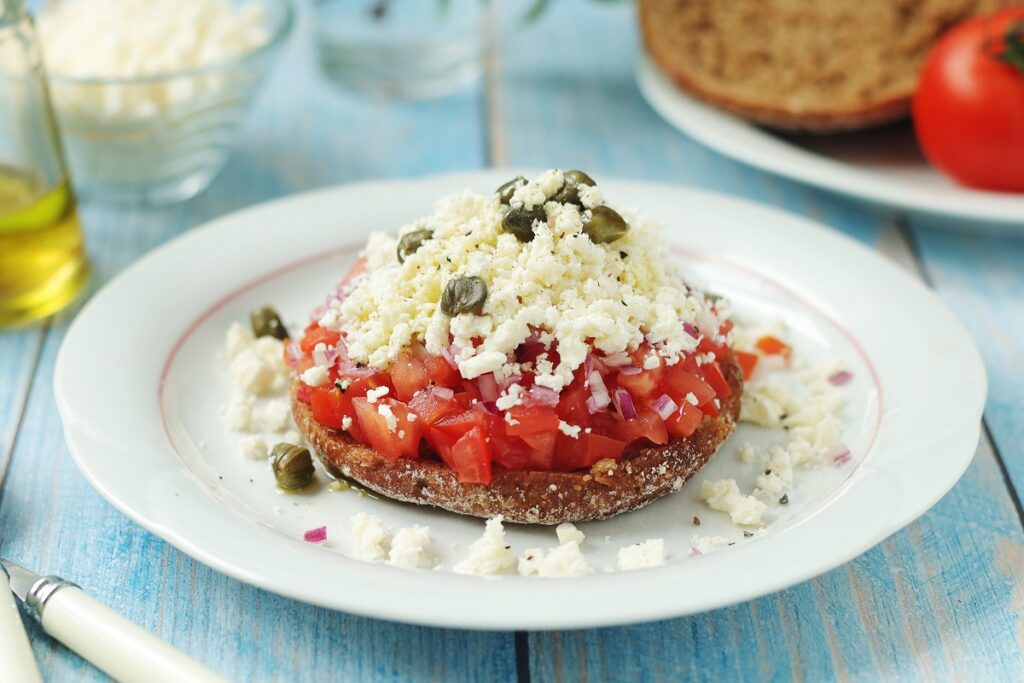
Perhaps the most iconic Cretan dish, Dakos is also known as a Cretan salad. It’s made with barley rusks (paximadi) as the base, topped with fresh vegetables such as tomato, xinomizithra or feta cheese, extra-virgin olive oil, and oregano. As one of Crete’s most popular salads, it is often served with olives or capers, making it a refreshing, complete meal any time of day. Barley rusks are also used in other dishes across Crete.
2. Kalitsounia

Kalitsounia are a type of cheese pie with countless savoury or sweet variations. The cheese filling is often made from Cretan cheeses, sometimes using goat’s milk, and may include mizithra, herbs, or greens. Sweet Kalitsounia can be enjoyed as a dessert, especially when drizzled with honey and sprinkled with cinnamon. Traditionally, serving Kalitsounia warm is common, highlighting their role in Cretan hospitality and celebration, especially during festive occasions.
3. Gamopilafo (Wedding Pilaf)

A dish inseparable from Cretan weddings and joyful gatherings. Rice is simmered in a rich broth made from goats or lamb, then finished with lemon and butter, resulting in a velvety, aromatic flavour. Traditionally, Gamopilafo is slow-cooked to allow the flavours to develop fully. The typical serving of Gamopilafo at weddings is generous, often presented at the centre of the table for everyone to share. It is eaten during celebrations as a symbol of unity and hospitality, bringing people together to enjoy this cherished dish. Always served warm, it evokes a sense of family bonds and tradition.
4. Sfakianes Pites (Sfakia Cheese Pies)
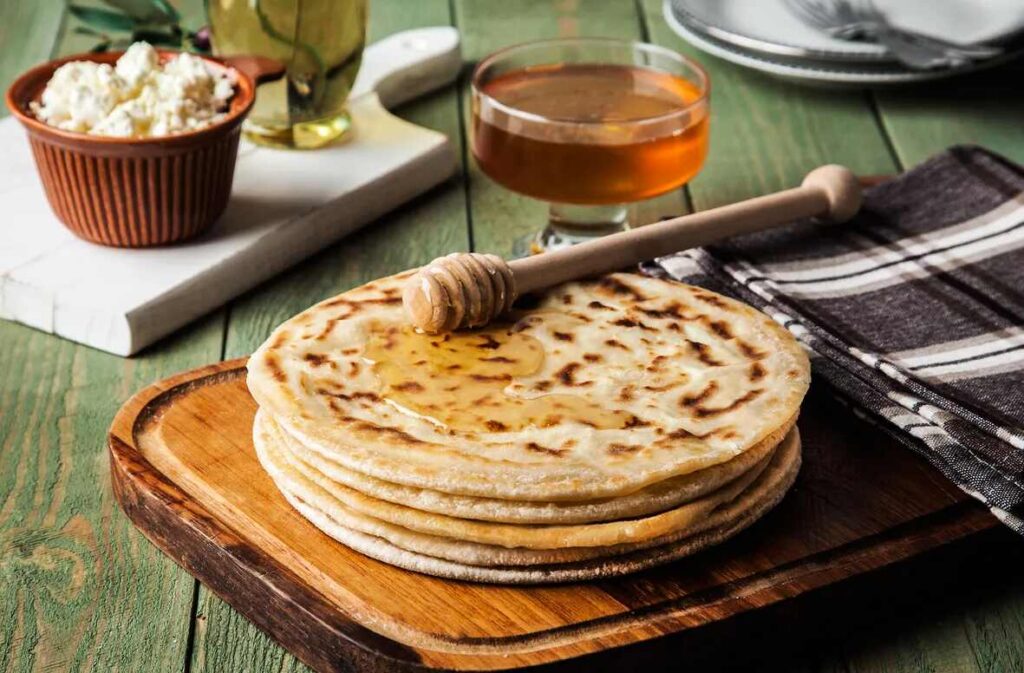
Sfakianes Pites are a traditional Cretan cheese pie from the Sfakia region, filled with soft Cretan cheeses, usually mizithra. These thin, delicate pies are lightly fried and traditionally served warm with honey, offering a delightful balance of sweet and savoury flavours. The sweet version is often enjoyed as a dessert.
5. Chaniotiko Boureki (Chania-Style Zucchini Pie)

A unique pie without pastry crust, Chaniotiko Boureki combines fresh vegetables like zucchini and potatoes with Cretan cheeses such as mizithra, and plenty of mint. The dish is cooked by layering the ingredients and baking until golden. For serving, Boureki is traditionally cut into squares and served warm, showcasing the rich, authentic taste of Cretan cuisine.
“To taste authentic recipes like Sfakianes Pites and Chaniotiko Boureki prepared by locals, explore our Food Tours in Chania, where each bite tells a story of family tradition and regional pride.”
6. Stifado (Rabbit or Goat Stew)
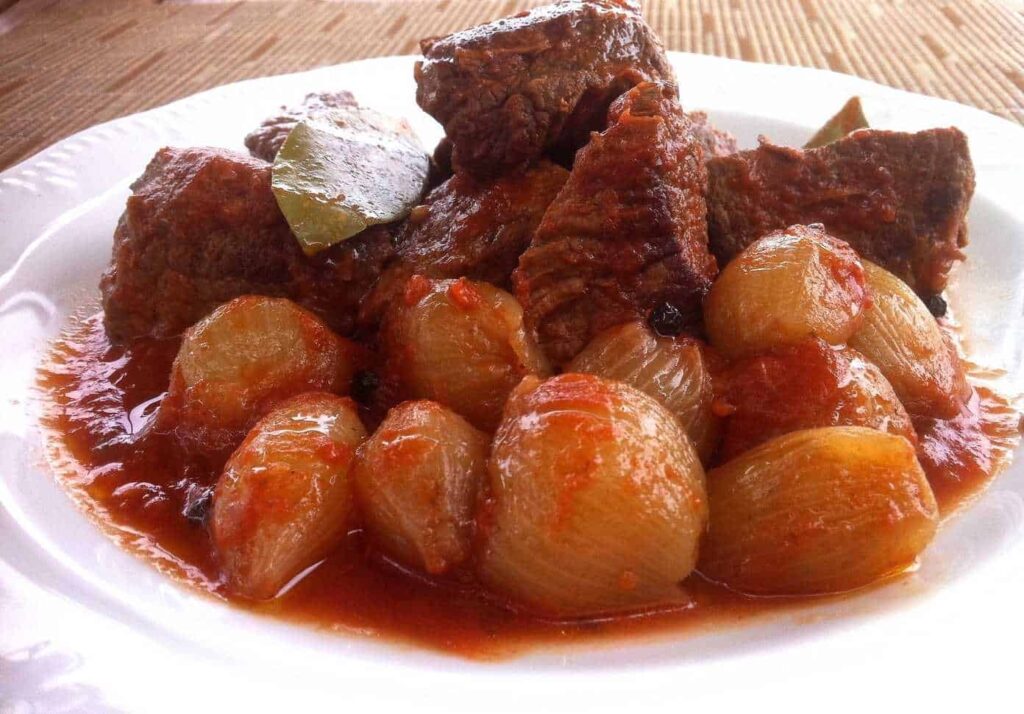
Stifado is a slow-cooked dish made with meat such as goat, pork, or chicken, combined with tomatoes and plenty of onions. The cook typically simmers the ingredients for several hours, allowing the flavours to meld and the meat to become tender. Rich, hearty, and aromatic, stifado is often eaten at family gatherings, embodying warmth and comfort at the table. Traditionally, stifado is served hot in generous portions, often accompanied by crusty bread for soaking up the sauce.
7. Snails “Boubouristi”
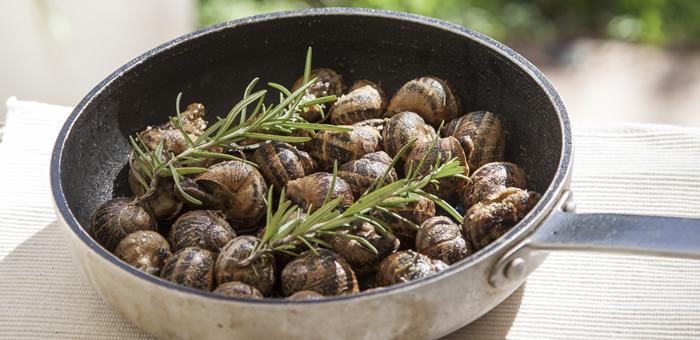
One of Crete’s most distinctive specialities, snails are a delicacy enjoyed by Greeks, especially in Crete. Traditionally, snails are cooked by frying them in olive oil with rosemary, then deglazing with vinegar, which gives them an earthy, bold flavour. Snails are typically eaten as a meze, often shared among friends and family. The usual serving in Cretan households features the snails hot from the pan, ready to be enjoyed with bread and local wine. Though unique, they remain a beloved meze in Cretan households.
8. Antikristo

Antikristo is prepared traditionally, following an ancient cooking method and a proper ritual. Lamb, or sometimes goat, is cut into large pieces, placed on wooden skewers, and slowly cooked over an open fire. This unique way to cook the meat allows it to develop crispy skin and juicy meat. Antikristo is typically served communally, with large portions brought to the table for everyone to share. It is often eaten during gatherings, representing not just a dish but also tradition and community.
9. Boiled Wild Greens
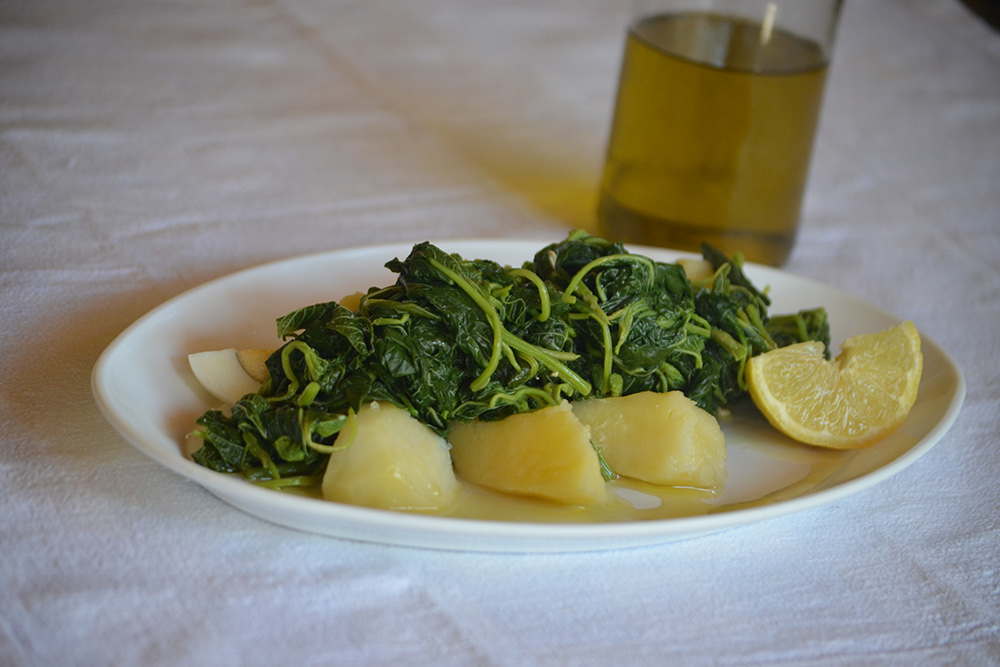
Wild greens in Crete, such as stamnagathi, purslane, and dandelion leaves, are traditionally served boiled. These wild greens are among the healthiest vegetables in Crete. The typical way to cook them is to boil them, then serve them with olive oil and lemon. This classic serving highlights their fresh flavours and nutritional value. Boiled greens are a staple of the local diet, valued for their nutrients and natural detoxifying properties.
10. Xerotigana (Cretan Honey Pastry Spirals)

Xerotigana is a traditional dessert often prepared for weddings and holidays. Thin strips of dough are fried and shaped into spirals, then drizzled with honey and sprinkled with walnuts or sesame seeds. The typical serving of Xerotigana is as a welcoming treat at celebrations, especially at weddings, where it is offered to guests. It can also be enjoyed with fresh fruit, adding a healthy and refreshing touch. Xerotigana is considered among the best foods for festive occasions, symbolising sweetness, prosperity, and joy.
The Essence of Cretan Cuisine
These dishes are more than recipes; they are living traditions passed down through generations. Rooted in the bounty of the land, Cretan food celebrates balance, health, and community. The joy of eating in Crete comes from savouring a variety of Cretan cheeses—many made from goat’s milk—used in local dishes like cheese pie, salads, and even served in thin slices. Traditional specialities such as smoked pork (hirina apakia), pork souvlaki, and cheese pies are popular dishes, often accompanied by French fries and fresh salads, including the famous Cretan salad. The main dish is always the centrepiece of a meal, reflecting Crete’s unique culinary identity within Greece.
To truly experience authentic Cretan cuisine, visit the best restaurants in Crete, where you can enjoy your meal in a beautiful setting and finish with a glass of Cretan brandy (raki). Consider taking a day trip to explore local food traditions and discover why Cretan cuisine is celebrated as a highlight of Greece’s rich culinary heritage. It is no wonder that the island’s cuisine has become a global model for delicious and wholesome eating.“To truly experience authentic Cretan cuisine, join one of our Food Tours in Crete or explore specific regions through Food Tours in Chania, Heraklion, and Rethymno. Taste local dishes where they were born, meet passionate producers, and discover why Cretan cuisine is celebrated as one of the world’s healthiest and most flavorful traditions.”




